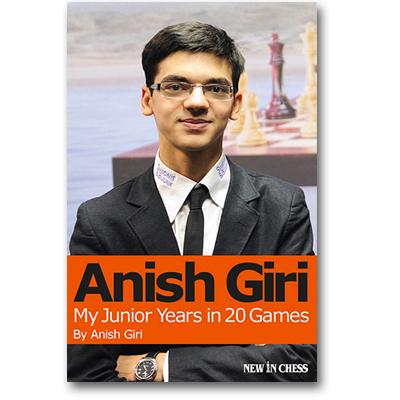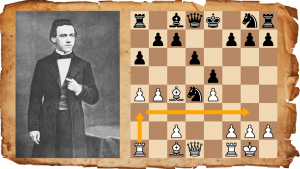
Review: My Junior Years in 20 Games
One of the first chess books I bought myself was a red little volume in German called Garrik Kasparow - Idol der Jugend by T.Lais. Published in 1983 - when Kasparov was just 20 years old - it contained 60 lightly annotated games played by the later World Champion.
When I unwrapped Anish Giri's debut My Junior Years in 20 Games, published by New in Chess in a red cover, I couldn't help thinking that history sometimes repeats itself in funny ways: the Dutch Nr. 1 Grandmaster has also recently turned 20 (and is now #11 on the World Live Ranking).
There's a difference, though: all games in Giri's book are analyzed and explained at great length by the youngster himself, making it much more similar to Kasparov's The Test of Time or Fischer's My 60 Memorable Games. Case in point: Giri displays similar self-criticism and awareness of chess culture and chess history as his two self-proclaimed heroes.
Taking examples from the classics ranging from Sultan Khan-Tartakower, 1931 to Fischer-Letelier, 1960, Giri immediately puts himself on the map as a chess author to reckon with.
My Junior Years in 20 Games opens with an interesting Preface by Sanjay Giri, Anish's father, who reveals that life wasn't always easy for the Giri family. Anish was born in St. Petersburg, Russia, when his parents were "young and inexperienced students in a hard-hitting transition period after the collapse of a mighty nation."
When his son was six years old, Sanjay moved to Japan where initially he lived alone and "missed most of Anish's early chess life." The following fragment is telling about the way Anish's parents brought him up:
"What I remember is that he was not very much into chess while we were in Japan. He used to play soccer and table tennis regularly with his friends, and there even were times that he did not look at the chessboard or the computer for several days at a stretch. We were also not that serious about his chess activities at that time, although we always tried to explore opportunities for him to play as much as possible."
If you think this is nothing special, please bear in mind that their son still managed to become Russian U-12 champion in this period!
The Introduction, written by Giri himself, is a relatively dull but comprehensive description of his career so far, mentioning key highlights and (a few) challenges. Huge contrast with his game analysis, which are detailed, erudite and features very funny prose:
"The black pieces are acting like a mutated hedgehog which soon will turn into an elephant with horns  . Having read a lot of books of my childhood hero Garry Kasparov, I can bet that he would use a more sophisticated metaphore. His favourite word 'ambush' comes to mind (...)."
. Having read a lot of books of my childhood hero Garry Kasparov, I can bet that he would use a more sophisticated metaphore. His favourite word 'ambush' comes to mind (...)."
Quite a few games in this volume have previously been analyzed by Giri for New in Chess Magazine, but many findings in the book are new or improvements over his old analysis.
This little fragment nicely shows how Giri has matured compared to just years ago: no longer does he accept 'some reason' as a valid argument to play a particular move and he analyses the attacks for both sides to a much greater depth, coming up with very different conclusions as a result.
(Elsewhere, he writes: "Now White has a wide choice, and every time look at this position I find another promising possibility for White... and then I refute it! I still haven't found a win, but maybe it is there!" If only all super-GMs annotating their own games would be so honest!)
Apart from such stylistic gems, the book is, of course, full of great chess.
This one is from a game I didn't know yet:
A fantastic game indeed and one to remember for future chess history books.
It's also interesting to see Giri's comments on the openings featured in his book, especially the Sicilian ones. I found the following explanation quite instructive:
Giri doen't only provide middlegame fireworks and useful opening explanations - in fact, I was most impressed by some of the endgames given in his book. I what curious to see what Giri would write about his near-victory over then-World Champion Vishy Anand in Wijk aan Zee, 2011 - a game that I watched live from the audience together with some chess friends - and the very complex double rook ending it featured.
Giri spends 11 pages analyzing this game which turned out to be one of the key moments in Giri's career so far. And can you imagine a 14-year old boy smoothly winning the following position against an experienced former world class grandmaster?
After reading My Junior Years in 20 Games, I didn't actually have the feeling I'd only seen twenty games. I felt that I'd gotten to known Anish Giri quite well, and that I understood his learning and development curve over the years much better.
Anish Giri surely has a shining future ahead of him, but already now he's made quite a mature contribution to chess literature. In this regard, he can already be compared to his great examples Fischer and Kasparov.
That's quite an achievement in itself, but one that shouldn't come as a surprise to anyone who's experienced what this bright young man is capable of.



